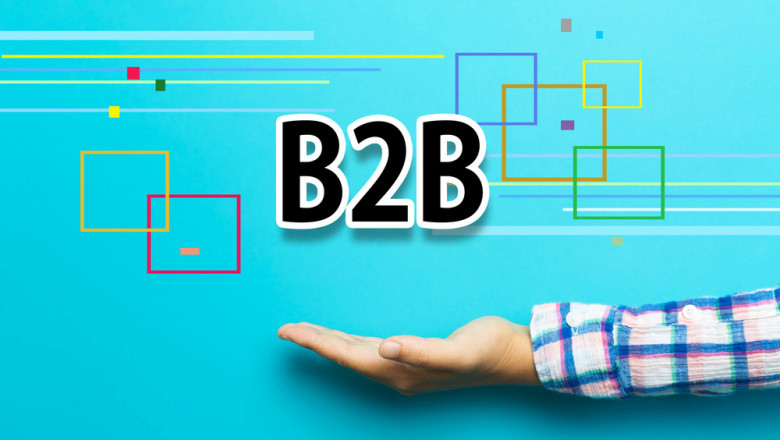views
Navigating the B2B Landscape: Customer Journey Mapping for Demand Generation Success
In today’s hyper-competitive B2B environment, aligning marketing efforts with the evolving expectations of buyers is essential. One of the most effective tools to achieve this alignment is customer journey mapping—a strategic process that visualizes the entire lifecycle of a prospect’s interaction with your brand. For B2B marketers focused on demand generation, understanding and optimizing the customer journey isn’t optional—it’s a competitive necessity.
At Acceligize, we empower businesses to fuel demand generation through data-driven strategies. This guide explores how mapping the B2B customer journey can be a game-changer in attracting, engaging, and converting high-value prospects into loyal customers.
What Is Customer Journey Mapping in B2B?
Customer journey mapping in the B2B space involves outlining every interaction a potential customer has with your brand, from the first point of awareness to the final purchase decision—and beyond. Unlike B2C, B2B journeys are often longer, more complex, and involve multiple stakeholders and touchpoints. A detailed map allows marketers to identify pain points, optimize engagement, and tailor messaging to the specific needs of decision-makers at each stage.
Why It Matters for Demand Generation
Demand generation isn’t just about getting leads—it's about attracting the right leads and moving them seamlessly through the buyer’s journey. Customer journey mapping provides a framework to understand how prospects discover, evaluate, and ultimately choose a solution. This insight enables marketers to create relevant content, select the right channels, and engage at the perfect moment.
Stages of the B2B Customer Journey & Mapping Tips
1. Awareness Stage
This is where prospects first encounter your brand—often through content, social media, search engines, or advertising.
Mapping Focus:
- Identify entry points (e.g., LinkedIn ads, blog posts, industry publications)
- Understand common triggers or pain points that initiate research
- Optimize SEO and top-of-funnel content
Demand Gen Tip:
Create educational, thought leadership content like whitepapers or infographics to establish credibility.
2. Consideration Stage
Prospects are actively comparing solutions and evaluating vendors.
Mapping Focus:
- Highlight evaluation criteria used by your ideal customer personas
- Map internal stakeholder involvement (e.g., finance, IT, C-suite)
- Capture key digital behaviors like webinar attendance, resource downloads
Demand Gen Tip:
Offer case studies, ROI calculators, and product comparison sheets that address specific buyer concerns.
To know more visit us @ https://acceligize.com/
3. Decision Stage
The prospect is narrowing down options and preparing to buy.
Mapping Focus:
- Pinpoint decision-making roles (e.g., economic buyer, influencer, technical gatekeeper)
- Map personalized touchpoints (e.g., one-on-one demos, pricing discussions)
- Identify any final objections or negotiation points
Demand Gen Tip:
Equip sales with intent data and tailored content to personalize conversations and build confidence.
4. Post-Purchase Stage
The customer journey doesn’t end with a closed deal. Retention and advocacy are crucial.
Mapping Focus:
- Outline onboarding, training, and support touchpoints
- Track engagement with customer success teams
- Include upsell/cross-sell opportunities and feedback loops
Demand Gen Tip:
Turn satisfied customers into brand advocates through referral programs, reviews, and success stories.
Best Practices for B2B Journey Mapping
- Use Data, Not Assumptions: Leverage analytics, CRM data, and customer interviews to understand real behaviors.
- Segment Your Audience: One journey doesn’t fit all—create maps tailored to different personas and industries.
- Align Sales and Marketing: Ensure your teams collaborate to reflect a unified understanding of the customer.
- Incorporate Intent Data: Behavioral signals can provide clues about where prospects are in their journey.
- Update Regularly: Buyer expectations evolve. Your journey maps should too.
The Role of Technology
Modern B2B marketing platforms—including marketing automation, CRM, and intent data tools—can enhance your ability to track and optimize the customer journey. These technologies provide real-time insights that support dynamic journey mapping, enabling you to adapt campaigns and messaging based on live customer behavior.
Read More @ https://acceligize.com/featured-blogs/customer-journey-mapping-for-b2b-demand-generation-a-guide-to-success/






















Comments
0 comment